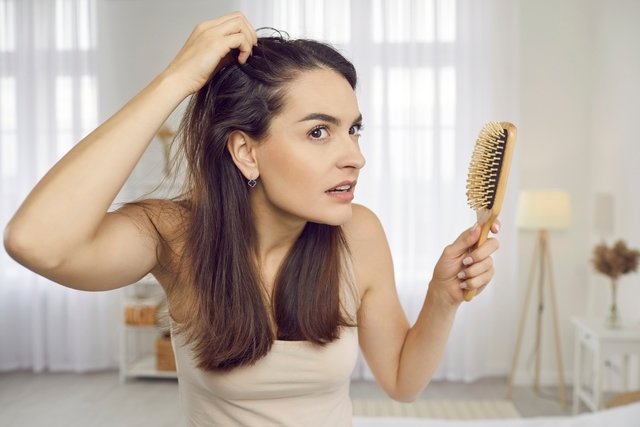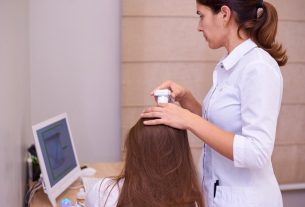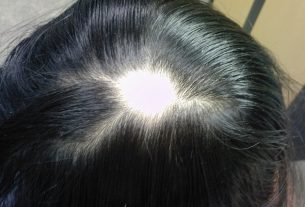Traction alopecia is a situation that occurs when your hair is styled too tightly, and is more common in women who undergo chemical procedures, such as straightening and coloring.
As a result of tight hairstyles, such as braids and ponytails, for example, it is possible for the strands to become more fragile and have their growth cycle altered due to inflammation in the region, causing redness and flaking in the region, the appearance of small bumps and hair loss. of hair.
It is important that a dermatologist is consulted so that the scalp can be assessed and the most appropriate treatment can be indicated, which may involve the use of medications that stimulate hair growth.

Traction alopecia symptoms
The main signs and symptoms indicative of traction alopecia are:
- Redness at the edge of the scalp, especially on the front and side;
- Appearance of lumps in the region;
- Local peeling;
- Appearance of shorter strands at the edges of the scalp;
- Decrease in the amount of hair in the region and lack of growth.
In the presence of signs and symptoms of traction alopecia, it is important that a dermatologist is consulted so that the diagnosis can be made and the most appropriate treatment can be initiated.
How the diagnosis is made
The diagnosis of traction alopecia must be made by a dermatologist based on an assessment of the person’s scalp, especially the region with little or no hair. In some cases, your doctor may take a small sample from your scalp to rule out other possible causes of hair loss. Learn about other causes of hair loss.
Taking care of your health has never been easier!
Main causes
Traction alopecia is mainly caused by the habit of doing very tight hairstyles, such as ponytails, buns and braids, for example. These hairstyles can cause damage to the hair, interfering with its growth cycle and causing hair loss.
This type of alopecia is more common in women, especially among those who undergo chemical procedures, such as coloring and straightening, as the hair can become more fragile.
How the treatment is carried out
Treatment for traction alopecia is guided by a dermatologist, who may recommend the use of medications that stimulate hair growth in the area, such as minoxidil and finasteride, for example. Check out how to use hair loss remedies.
In cases where there are many symptoms of inflammation, the doctor may also recommend the use of corticosteroid medications in the form of ointments and antibiotics, in some cases. Furthermore, it is important to avoid doing very tight hairstyles to prevent the hair from becoming fragile.
Bibliography
- BRAZILIAN SOCIETY OF DERMATOLOGY OF RIO DE JANEIRO. Traction alopecia. Available at: <https://sbdrj.org.br/alopecia-de-tracao/>. Accessed on March 15, 2023

Sign up for our newsletter and stay up to date with exclusive news
that can transform your routine!
Warning: Undefined array key "title" in /home/storelat/public_html/wp-content/plugins/link-whisper-premium/templates/frontend/related-posts.php on line 12
Warning: Undefined array key "title_tag" in /home/storelat/public_html/wp-content/plugins/link-whisper-premium/templates/frontend/related-posts.php on line 13



